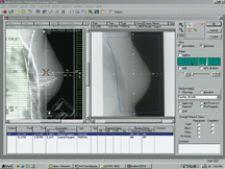
Mary Washington Hospital, Fredericksburg, VA, is part of MediCorp Health Systems
Mary Washington Hospital (MWH), part of MediCorp Health Systems in Fredericksburg, VA, has been the area’s premier healthcare provider for more than 100 years. Through the Cancer Center of Virginia, MWH offers the most advanced radiation therapy available. In 2000, they were the first community hospital in the state to introduce intensity modulated radiotherapy (IMRT), targeting tumors with greater precision and stronger doses, while offering better protection to the healthy tissue surrounding tumors. Today, they also are positioned to be the first cancer center in the area to provide leading-edge, image-guided radiotherapy (IGRT) services.
IMRT relies on sophisticated treatment planning, charting and delivery systems to effectively communicate and manage large and increasingly complex radiotherapy data sets. Likewise, IGRT is an information-intensive treatment method, but one that places increasing emphasis on both information and image management. As image guidance suggests, the critical information used to guide therapy is mostly derived from the analysis of images but in the presence and in detailed consideration of other treatment information. Therefore, seamless integration of radiotherapy data and images throughout the entire process of planning, validation, setup, positioning, verification, recording, charting and analysis is crucial to the often rapid clinical decision-making needs of a leading-edge radiation therapy department such as MWH.
Realizing early on that a single delivery vendor would not be able to provide every solution needed, MWH opted for a multivendor delivery environment. Because MWH treats patients on a Siemens PRIMUS and a Varian 2300 IX equipped with the 4-D Integrated Treatment Console (ITC) and Varian On-Board Imager (OBI), MWH needed an oncology management solution capable of supporting a multivendor environment. IMPAC’s image-guided treatment management (IGTM) solution provided the EMR-based, vendor-independent support for IMRT and IGRT that MWH required.
“Using an EMR platform that works so well regardless of delivery vendor was a strong motivating factor for us,” Brian Monzon, chief therapist at MWH said. “Since our treatment volume is relatively high for a two-machine department, having a common user environment to manage patient and patient treatments was absolutely critical to maintaining throughput. These factors led to a significant overall improvement in department workflow.”
Enhanced Clinical Decision-Making
As critical as it was for MWH to select an oncology EMR that was effective in a multivendor environment, another very important factor to consider was the robustness of its imaging capabilities. An EMR that stores, retrieves and helps analyze data and images throughout the treatment plan and workflow would add reliability and significant value to clinical decision-making.
MWH’s IGTM process begins with initial patient referral – preregistering the patient, confirming authorizations, scheduling a consultation and compiling outside diagnostic reports and imaging studies – thereby establishing the foundation of a complete oncology treatment record.
Because the center relies on a vendor-independent solution that complies with industry standards such as DICOM and DICOM RT, radiation oncology images and plans from multivendor imaging, virtual simulation and treatment planning systems can be imported into the image-enabled oncology EMR to generate an accurate treatment prescription, document plan review and approval. Final plans and related images are also stored as part of the EMR for easy reference and retrieval.
“As we increasingly use those images for analysis and decision-making as opposed to simply for verification, we depend more and more on our EMR’s capabilities and features that support our decision-making processes,” said Monzon. “For example, the EMR’s planar image registration tools provide us the ability to quickly and accurately perform image registration, aiding in the rapid turnover of patient treatments. Because these features are so well-integrated, our productivity has continued to improve. The practical application of these features is also identical regardless of the imaging chain or delivery device, reducing the time necessary for staff education and limiting the risk of error.”
Their oncology EMR also supports computerized physician order entry (CPOE) for radiation oncology – template-based care plans that help automate the generation of radiation therapy prescriptions and supportive care, and customizable treatment calendars that help plan and facilitate delivery of IMRT and IGRT treatment modalities. Pretreatment Quality Assurance (QA) is another critical component as is pre- and post-treatment positioning and analysis.
Continued Innovative Treatment, Optimized Workflow
When asked what drivers of past success will be integral to continued innovations in MWH’s future, Monzon said, “With IGRT, streamlined workflow is all the more critical to MWH’s success. Because of the integrated image and supporting clinical information, and the efficient process flow offered by our current oncology EMR, we have been able to manage the expected torrent of data and images through the practice of IGRT. As we continue to leverage all of our image-enabled oncology EMR’s capabilities, we expect workflow improvements similar to those we experienced when moving from a pre-electronic IMRT practice to a fully paperless integrated environment.”
MWH demonstrates that imaging, planning, positioning and treatment delivery equipment from a combination of vendors can be effectively supported by IMPAC’s image-enabled oncology EMR.



